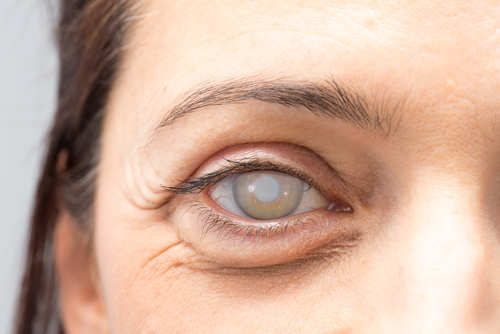What Are The Symptoms of Cataracts?
Cataracts occur when proteins in the natural lens of your eye begin to break down and clump together. This clumping causes cloudiness in them, which can lead to complete vision loss.
Cataracts are a common problem, especially among older people. More than half of Americans over the age of eighty either have cataracts or have received cataract surgery.
The concept of cataract surgery has existed for centuries. However, it was less successful when it originated than it is now. Modern medicine now allows eye surgeons to cure cataracts and give you your eyesight back completely.
During cataract surgery, intraocular lenses, or IOLs, replace the clouded lens and help you see again. Certain IOLs can even help you see better than you ever have in your life!
Keep reading to learn more about comprehensive care for cataracts. See which IOL is suitable for you and how good your eyesight can be!
How Do Cataracts Affect Your Vision?
The lens of your eye helps to focus light onto your retina as the light enters your eye. Your retina then sends nerve signals based on that light to your brain. Then your brain interprets the signals and creates the images you see.
Over time, your lens can become cloudy and opaque, making it difficult for light to pass through. This cloudiness is a cataract. As cataracts develop, they become cloudier until light can no longer pass through your lens.

There are three different primary types of cataracts. They are nuclear, cortical, and subcapsular.
Nuclear cataracts are usually caused by aging. They tend to form in the center of your lens.
Cortical cataracts form around the edges of your lens and grow inwards like spokes on a wheel. They often occur in patients with diabetes.
Subcapsular cataracts are common in people who use steroids and also people with diabetes. They form at the back of your lens, right in the path of light.
Regardless of what type of cataract you have, the symptoms are usually the same. Cataracts form slowly, so you might not realize you have them until they begin to affect your vision.
What are the Signs of Cataracts?
When cataracts become severe enough, the quality of your vision will deteriorate. You might notice the following symptoms:

- Cloudy, blurry vision
- Frequent changes to your glasses prescription
- Vision that improves temporarily before worsening again
- Needing more light to read, write, or complete fine-focus tasks
- Poor night vision
- Glares and halos around lights, especially at night
- Faded or yellowed colors
- Double vision in one or both of your eyes
The symptoms of cataracts are similar to other eye conditions like presbyopia and age-related vision loss. The only way to know with certainty that you have cataracts is to have an eye doctor diagnose them.
This is why it’s essential to visit a professional for regular eye exams. They can accurately diagnose your condition and provide treatment.
Risk Factors for Cataracts
Age is the primary risk factor for cataracts. But your actions earlier in life can increase your chances of developing them as you age.

For example, spending a lot of time outside without eye protection can increase the amount of UV light that your eyes absorb. Over time, this can damage your eyes and lead to cataracts.
Other risk factors include:
- Diabetes
- Steroid use
- Smoking
- Hypertension
- Alcoholism
- Poor nutrition
- Obesity
What are the Treatment Options for Cataracts?
The only solution to cataracts is cataract surgery. If your cataracts are in their early stages, you will have to wait to remove them until they develop further.
Cataracts do not cause harm to any other part of your eye, but they do worsen over time. There are no alternative solutions for cataracts, but it’s up to you and your eye doctor when you get cataract surgery.
If they aren’t bothering you, then there’s no need for immediate treatment. This waiting period can give you time to prepare for surgery, discuss your options, and choose an IOL.
Choosing an IOL
The great thing about cataract surgery is that it can improve your vision in more ways than one. Not only are you removing the cloudy lens, but you’re replacing it with an artificial one.
There are numerous IOLs for you to choose from. Your eye doctor will help you find the best IOL for your lifestyle and vision goals.
There are three primary refractive distances that your eyes can focus on. These are distance, intermediate, and up-close distance.
When you’re young, your eyes can switch between these distances seamlessly. However, it becomes difficult to see at certain distances as you get older.
Specific intraocular lenses can help correct your sight in different ways.

Monofocal or standard IOLs can help you focus on one specific distance. Most people correct distance vision with a monofocal IOL.
Any IOL that does more than a monofocal IOL is a premium IOL. These lenses can give you the best eyesight of your life.
Multifocal IOLs can allow you to see at multiple distances as your natural lens did. They can reduce or end your need for glasses depending on the lens you choose.
Extended depth of focus (EDOF) lenses can give you clear vision at multiple distances. They can do this without the common visual aberrations that multifocal IOLs create.
If you have astigmatism, you can correct it with a toric model IOL. Most IOLs can come in a toric model. That way, you can correct your astigmatism and get rid of your cataracts simultaneously.
What to Expect During Cataract Surgery
The cataract removal process is straightforward. During the surgery, your eyes get numbed, so you don’t feel anything.
Then your surgeon makes a small opening in your cornea. That incision gives them access to your lens behind your cornea.
They break your clouded lens into smaller pieces to make it easier to remove. After that, they fill the space created by removing your natural lens with your IOL.
The entire surgery only uses one incision, which is so tiny that your eye heals on its own. After surgery, make sure to follow your doctor’s instructions, so your eye heals properly.
Are you ready to start thinking about cataract surgery? Schedule an appointment at Complete Eyecare West in Columbus, OH. Prepare to get rid of your cataracts!







